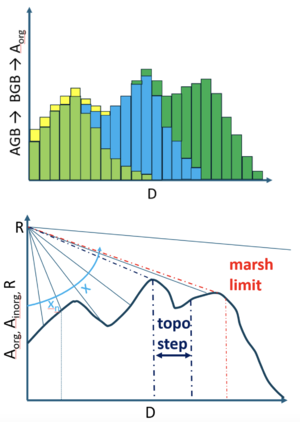2025 CSDMS meeting-102
(if you haven't already)
Log in (or create account for non-CSDMS members)
Forgot username? Search or email:CSDMSweb@colorado.edu
Browse abstracts
Theoretically and Empirically based modeling of the evolution of multi-species marshes
The approach involves techniques to detect the spatial distributions of fractional cover and biomass densities of multiple marsh species from satellite observations. These techniques were developed using a combination of field observations and drone and airborne lidar and multispectral data from the East Coast of the United States and the Venice Lagoon, and can be applied to any coastal environment with similar mixes of vegetation types. Biomass density can be treated as a function of elevation, representing the realized niches of observed vegetation species, or mixtures of species.
The approach also involves modeling demonstrating that, within marsh basins, tidal current velocities and rates of inorganic sediment deposition do not depend on vegetation properties. Given this simplification, and the relationship between biomass density and elevation (realized niches), solving for equilibrium depths and biomass densities as a function of distance from the nearest channel becomes straightforward (Figure 1).
The rate of change of depth D (below high-water level) is given by:
∂D/∂t = R - A_inorg - A_org
where R is the rate of SLR, A_inorg and A_org are the rates of accretion of inorganic and organic sediment, respectively. A_inorg is equal to DC, where C is sediment concentration. In Figure 1, equilibrium depths (∂D/∂t=0; R - A_inorg = A_org) are graphically determined.
Acknowledgments
Supported by the US NSF Geomorphology and Land Use Dynamics program (2016068), and AA, MM, and SS were also supported by the RETURN Extended Partnership and received funding from the European Union Next-GenerationEU (National Recovery and Resilience Plan – NRRP, Mission 4, Component 2, Investment 1.3 – D.D. 1243 2/8/2022, PE0000005).


